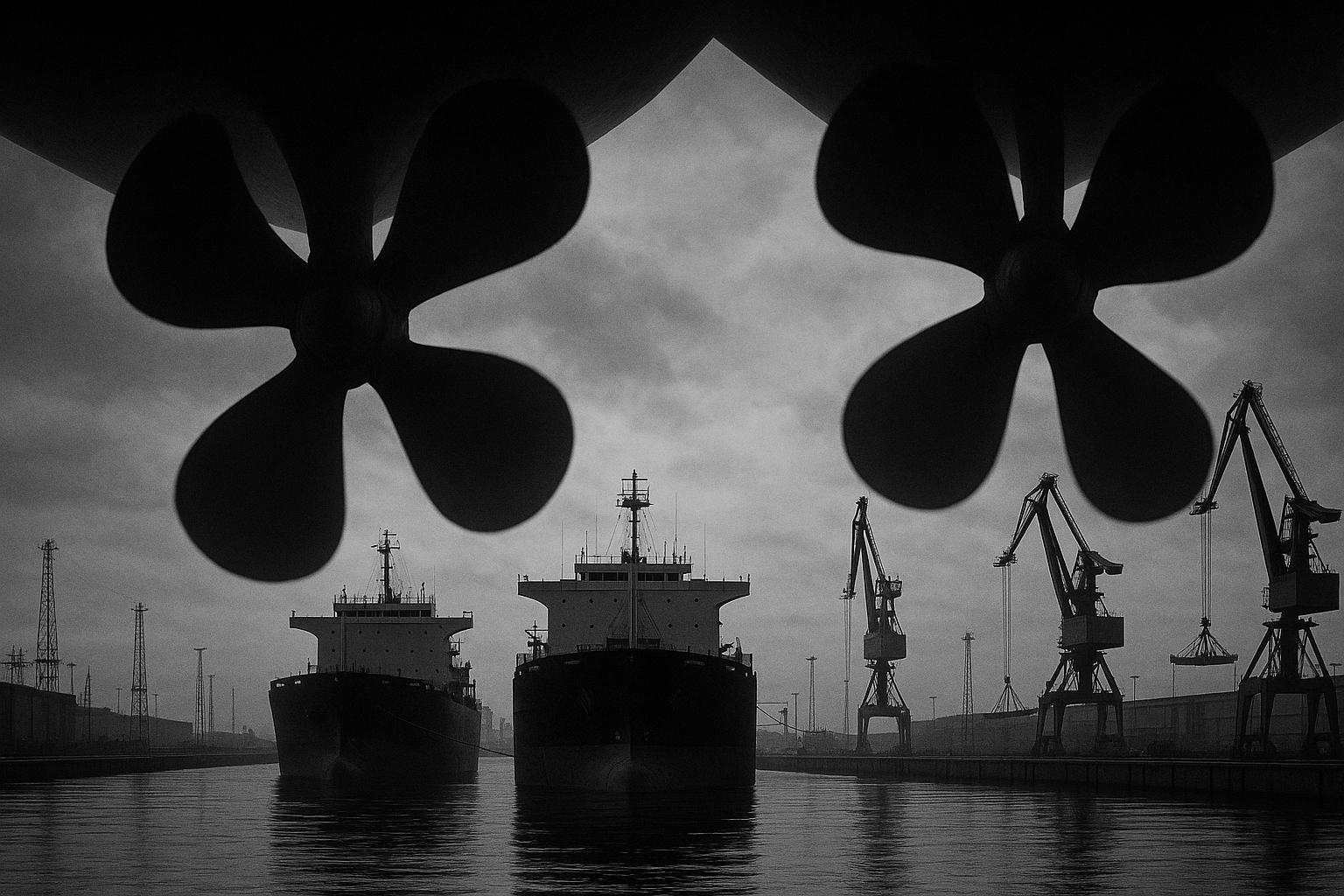Nearly 200 shipping companies have rallied behind a pioneering global regulatory framework aimed at slashing greenhouse gas emissions from the maritime industry—a sector responsible for about 3% of worldwide carbon emissions. This united industry front is pushing the International Maritime Organization (IMO), the United Nations agency that governs international shipping, to adopt a binding regulatory package when its member states convene in London in October.
The proposed regulations include the world’s first-ever global fee on ship emissions, aiming to impose a minimum charge of around $100 per tonne of emissions exceeding set thresholds starting in 2027 or 2028. This fee is designed not only to penalise excessive CO₂ emissions but also to generate funds—expected to reach as much as $13 billion annually—to support a shift towards cleaner ship technologies and fuels, as well as to aid developing countries vulnerable to climate change. The framework also establishes marine fuel standards to gradually phase in low- and zero-emission fuels, with the objective of steering the shipping industry towards net-zero emissions by 2050.
This landmark agreement reflects years of negotiations and a growing consensus among major maritime nations and the shipping industry itself, including the Getting to Zero Coalition—a broad alliance of companies, governments, and international organizations—and the International Chamber of Shipping, which represents over 80% of the global merchant fleet. These stakeholders emphasise that regulatory certainty is crucial for investment in cleaner technologies and to avoid fragmented regional systems that could impose duplicative costs on shipping companies.
However, the measures have faced firm opposition, particularly from the United States government under the Trump administration and lingering into current positions. U.S. authorities have denounced the global fee as effectively a carbon tax imposed by an unaccountable UN body on American interests. They argue that the proposed fuel standards are unachievable and would inflate costs, unfairly benefiting nations like China, which leads in developing cleaner fuels for shipping. The U.S. withdrew from talks earlier this year and issued stern warnings of retaliatory measures should the regulations be adopted, signalling a potential diplomatic and trade conflict.
Several major oil-producing countries, including Saudi Arabia and Russia, have also voiced strong resistance, citing concerns about the impact of aggressive emissions targets on trade, food security, and energy supplies. Some involved nations have rejected the stringency of near-term emissions reductions, noting that science and engineering realities render rapid deep cuts unfeasible before 2030.
Despite these challenges, a vote in April at the IMO yielded a regulatory framework accepted by the majority, though notably without U.S. participation. The initiative’s supporters argue that failing to implement the agreement would significantly delay the shipping sector’s decarbonisation and jeopardise its contribution to the global fight against dangerous climate change. They warn that shipping might otherwise miss its fair share of emissions reductions needed to meet internationally agreed temperature goals.
Environmental groups have cautiously welcomed the agreement as a critical initial step but caution that greater ambition and enforcement will be necessary to reach the IMO’s 2050 net-zero goal. The framework’s success will depend on the October vote formalising the rules and whether the leading maritime countries can bridge their differences amid geopolitical tensions.
In short, the shipping industry stands at a crossroads between maintaining the status quo with growing emissions or embracing a transformative, though contested, path toward sustainability. The outcome of the upcoming IMO meeting will be pivotal not only for the global shipping trade but also for broader international climate efforts.
📌 Reference Map:
- Paragraph 1 – [1], [2], [3], [7]
- Paragraph 2 – [1], [3], [5], [6], [7]
- Paragraph 3 – [1], [2], [3]
- Paragraph 4 – [1], [4], [7]
- Paragraph 5 – [1], [6], [7]
- Paragraph 6 – [1], [5], [6]
- Paragraph 7 – [1], [5], [6], [7]
- Paragraph 8 – [1], [5], [6], [7]
Source: Noah Wire Services
